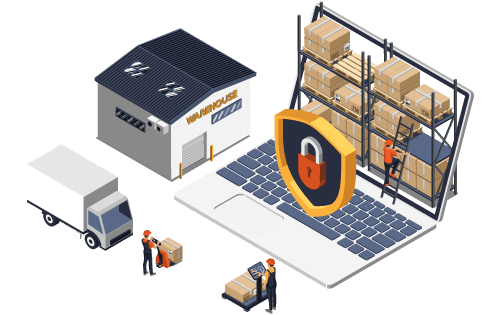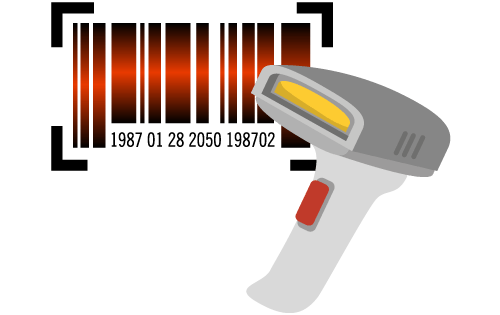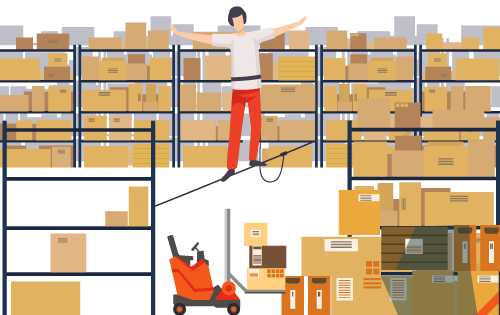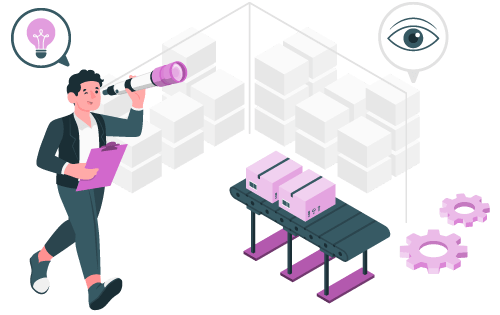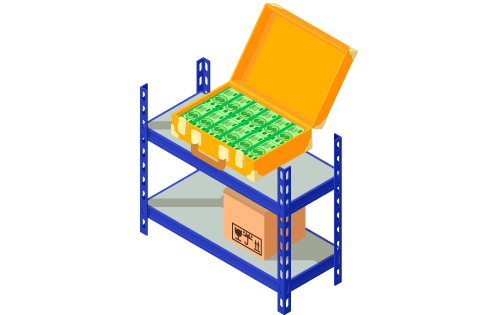Do You Know Your True Product Cost?
Built For


- True product cost or landed cost
- The impact of true product cost on business
- Calculating landed cost

Do You Know Your True Product Cost?
Do you know the true cost of your products? It’s easy to think of the price you paid your supplier as the only cost involved, but there’s a lot more to it than that. The expenses can add up quickly, from shipping fees to customs duties, and if you’re not careful, they can take a significant bite out of your profits. Understanding true product cost, also known as the landed cost, is crucial for any business that deals with physical products.
Landed cost includes everything from the amount paid for the product and shipping charges to customs fees and insurance. Knowing your landed cost can help you set more accurate prices, manage your inventory better, and boost your profit margins. In this article, we’ll break down landed cost, why it’s essential, and how you can calculate it to ensure you’re truly on top of your business finances.
What is Your True Product Cost?
Landed cost is the total cost of getting a product from the supplier to your warehouse, encompassing every expense along the way. It goes beyond the simple purchase price to include all the additional costs necessary to bring a product to its final destination.
Understanding landed cost is vital for accurately determining the true cost of your products and ensuring your pricing strategy covers all expenses.
Components of Landed Cost
- Purchase Price: The amount paid to the supplier for the product itself.
- Shipping Costs are the fees associated with transporting the product from the supplier to your location. These can include freight charges, handling fees, and any additional costs incurred during transportation.
- Customs Duties and Taxes: Any import duties, tariffs, or taxes imposed by the destination country. Costs can vary depending on the countries involved in the transaction and the product type.
- Insurance is the cost of insuring the goods during transit to protect against potential loss or damage.
- Handling Fees: Costs associated with the physical handling of the goods during shipment. This can include fees for loading and unloading, warehousing, and any other manual processes required to move the product.
- Currency Conversion Fees: If you purchase products from a supplier in a different country, you may incur fees for converting currencies. These can add an additional layer of cost to your product.
Each component contributes to the total landed cost, or true product cost, providing a more comprehensive view of your spending to get your product to market. By factoring in all these elements, you can better understand your expenses and set prices that ensure profitability.
Why Knowing Your True Product Cost is Crucial
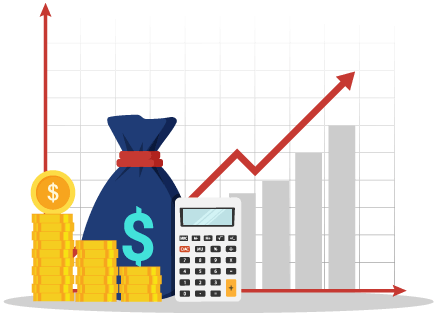
Understanding your true product cost is essential for several reasons. It impacts various aspects of your business, from profit margins to pricing strategies and inventory valuation. Let’s delve into why knowing your landed cost is so important.
Profit Margins
Your profit margins depend on accurately calculating the total cost of your products. If you only consider the purchase price and ignore other associated costs, you may have a misleading view of your profitability. By accounting for the total landed cost, you can set prices to cover all expenses and maintain a healthy margin. This comprehensive approach helps you make informed financial decisions and sustain your business in the long run.
Pricing Strategy
Setting the correct product price is crucial for ensuring profitability. An accurate understanding of your landed cost allows you to price your products without sacrificing profit. It also helps identify any cost-saving opportunities in your supply chain, enabling you to adjust your pricing strategy accordingly. With a precise landed cost calculation, you can confidently offer discounts or promotions or adjust prices to match market conditions.
Inventory Valuation
Accurate inventory valuation is vital for financial reporting and tax purposes. Landed cost reflects the value of your inventory by including all expenses incurred to bring products into your warehouse. This accurate valuation helps in better financial planning and inventory management and allows for more precise profit and loss calculations, giving you a clearer picture of your business’s financial health.
Cash Flow Management
Knowing your landed cost helps you manage your cash flow more effectively. It allows you to anticipate all expenses related to acquiring and stocking products, ensuring you allocate sufficient funds for these purposes. This foresight helps avoid unexpected cash flow shortages and maintain smooth operations. Effective cash flow management, bolstered by an accurate understanding of landed cost, ensures your business remains financially stable and can handle unforeseen expenses.
Strategic Planning
Incorporating landed cost into your strategic planning enables you to make better business decisions. Whether you’re entering new markets, negotiating with suppliers, or planning your inventory levels, knowing the full cost picture helps you formulate effective strategies. It also allows you to evaluate different scenarios and their financial implications, ensuring you choose the most cost-effective and profitable options.
Understanding and incorporating landed cost into your business practices can enhance your pricing strategy, improve profit margins, and achieve better financial control.
Calculating Landed Cost
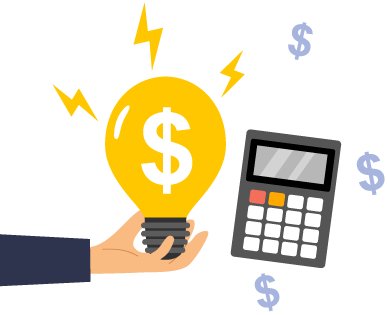
Accurately calculating landed cost is essential for understanding the true cost of your products. While it may seem complex, breaking it down into a step-by-step process can simplify the task. Here’s a guide to help you calculate your landed cost.
Identify All Cost Components
Start by listing all potential costs of bringing the product from the supplier to your warehouse. This includes the purchase price, shipping costs, customs duties, taxes, insurance, handling fees, and currency conversion fees.
Gather Necessary Data
Collect detailed information on each cost component. This might involve reviewing supplier invoices, shipping documents, customs declarations, insurance policies, and currency exchange records. Accurate data collection is crucial for precise cost calculation.
Use Appropriate Formulas
Apply the following basic formula, to sum up all the costs:
Landed Cost=Purchase Price+Shipping Costs+Customs Duties and Taxes+Insurance+Handling Fees+Currency Conversion Fees
Calculate Each Component
- Purchase Price: The amount paid to the supplier.
- Shipping Costs: Include all freight charges, whether by sea, air, or land.
- Customs Duties and Taxes: Apply the relevant tariffs and taxes based on the product type and destination country.
- Insurance: Calculate the insurance premium based on the value of the goods.
- Handling Fees: Add any fees for loading, unloading, and warehousing.
- Currency Conversion Fees: Convert the purchase price and other costs to your local currency, factoring in conversion fees.
Sum Up All Costs
Add up all the identified and calculated costs to get the total landed cost for the product.
Example Calculation
Let’s go through an example to illustrate the calculation:
- Purchase Price: $10,000
- Shipping Costs: $1,200
- Customs Duties and Taxes: $500
- Insurance: $300
- Handling Fees: $200
- Currency Conversion Fees: $100
Using the formula
Landed Cost=10,000+1,200+500+300+200+100=12,300
So, the landed cost of the product is $12,300.
Tools for Calculating Landed Cost with Inventory and Order Management Software
Calculating landed costs manually can be time-consuming and prone to errors, especially for businesses dealing with large volumes of imports. Fortunately, inventory and order management software helps you automate the calculation of landed costs by computing the total landed cost, ensuring accuracy and saving time.
Case Study: Maple Distributing – Managing Growth with Better Inventory Management

Maple Distributing supplies premium outdoor kitchen solutions to retailers and has experienced significant growth since its inception in 2016. Maple Distributing has consistently focused on meeting consumer demands and ensuring the correct tools were in place to support demand and exceed customer expectations.
The Need for Better Inventory Management
The high demand for Maple Distributing products required better inventory management. As the company grew rapidly, its reliance on QuickBooks and spreadsheets became unsustainable. These tools were not sufficient to keep up with its increasing operational demands and inventory tracking needs.
Cost of Goods Sold Challenges Solved
Acctivate’s landed cost feature provides Maple Distributing with an accurate cost of goods sold by adding freight charges for imported container pools. This is particularly crucial as container prices have risen dramatically.
“We’re using landed cost in Acctivate to add freight costs into our products. We get a few products from China, and the container that used to be $4,500 could be $18,000 now. To not track that wouldn’t work because the percentage of cost of the item that is freight is enormous.”
QuickBooks Integration
Acctivate’s direct bi-directional integration with QuickBooks allowed Maple Distributing to extend QuickBooks’ capabilities without replacing it. Acctivate became the primary system for managing purchasing, inventory, orders, fulfillment, and customer data, while QuickBooks handled the financials.
Improved Inventory Management
Replacing manual, error-prone spreadsheets with Acctivate’s inventory software gave Maple Distributing better control over their inventory, including product imports and serialized products. With Acctivate, inventory levels are maintained across all warehouses, preventing products from being sold when they are not yet available. This is especially important for products imported from overseas.
Serial Number Traceability
Tracking and tracing serial numbers in Acctivate is critical for Maple Distributing, saving them from potential operational disruptions. Maple Distributing also gains additional serial number control with Acctivate’s mobile warehousing functionality, using portable barcoding devices for their order fulfillment process.
The Impact
With Acctivate, Maple Distributing has moved away from manually managing inventory with spreadsheets. Acctivate now handles its operations as a centralized, automated inventory solution, keeping all users and data unified and providing robust functionality for strategic processes.
“We’re doing 30% more in revenue than when we started. In 2020, we doubled the revenue of our company. We would be dead in the water without Acctivate. We depend on it so much. The simplicity of Acctivate is great. “
Call us at 817-870-1311
